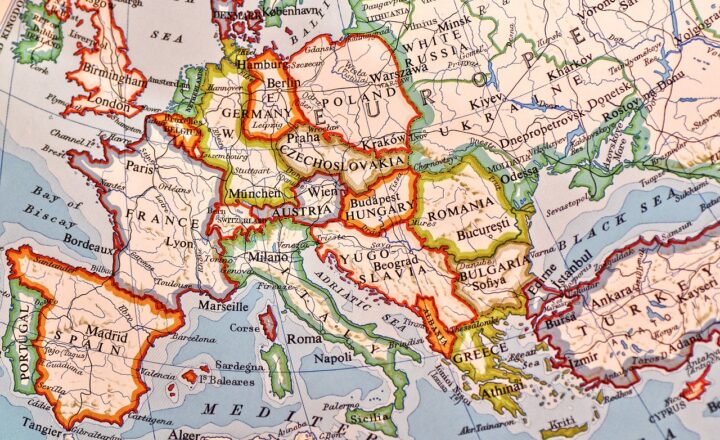The Power of Symbols: How Logos, Flags, and Icons Tell Stories of Identity
November 17, 2024

Symbols are everywhere around us, influencing our perceptions, values, and identities. From corporate logos to national flags, icons play a crucial role in how we differentiate between brands and cultures. This article delves deep into the significance of symbols, exploring how they communicate complex narratives and shape our understanding of identity.
1. Understanding the Nature of Symbols
Symbols represent not only the visible aspects of culture but also the invisible ties that bind individuals to their identities. The concept of a symbol is rooted in semiotics—the study of signs and symbols and their use or interpretation. A symbol can evoke emotions, recall memories, and summon meaning far beyond its physical representation.
For example, a heart can symbolize love and compassion, while a skull might represent danger or rebellion. In the world of marketing and branding, the effectiveness of a logo often hinges on its ability to encapsulate the essence of a brand in a simple graphic representation. A profoundly designed logo can become synonymous with the values and beliefs of that company or organization.
2. Logos: Branding and Identity
Logos are visual representations that communicate the brand’s identity and ethos. A well-crafted logo can accomplish several goals: it creates recognition, conveys authenticity, and helps evoke specific emotions in consumers.
– Recognition: Think of some of the world’s most recognizable logos, such as the golden arches of McDonald’s or the swoosh of Nike. These logos encapsulate the essence of their brands and can be instantly recognized worldwide.
– Conveying Authenticity: Logos also signal credibility. A reputable logo establishes a brand’s trustworthiness and commitment to quality, which can be effective in retaining customers.
– Emotional Connection: Brands strive to forge emotional connections with their audience. Consider the Apple logo; it’s sleek and modern, representing innovation and simplicity, which resonates deeply with tech enthusiasts and everyday users alike.
Symbols within logos also often incorporate color psychology, where colors invoke varying emotional responses—red signifies excitement or passion, blue conveys trust and reliability.
3. Flags: A Testament to Identity and Unity
Flags are among the most potent symbols of identity. They represent national pride, unity, and sometimes, historical struggles. A flag tells a story of culture, history, and shared values.
– National Identity: Take the example of the flag of the United States—red, white, and blue embody valor, purity, and justice. It symbolizes the nation’s ideals and the sacrifices made for independence.
– Unity and Diversity: Flags can also symbolize the complexity of national identities. For example, the South African flag’s multicolored design represents unity in diversity, reflecting the nation’s historical transition from apartheid to democracy.
– Power and Resistance: In many contexts, flags serve as a form of resistance and empowerment. The use of the LGBTQ+ rainbow flag conveys a narrative of acceptance, diversity, and pride, advocating for rights and equal treatment.
Flags carry a vast emotional weight and can evoke sentiments of patriotism, protest, or solidarity.
4. Icons: Visual Language of Modern Communication
In our technology-driven world, icons serve as the visual language of communication. Whether in applications, websites, or digital products, icons simplify interactions and improve user experience.
– Cultural Relevance: Icons often depend heavily on cultural context. A thumbs-up symbol in the United States indicates approval or agreement, but in some cultures, it may be offensive.
– Simplicity and Recognition: Icons are designed to be universally recognizable and easily understood. For example, the magnifying glass represents search, universally understood in various contexts.
– Storytelling through Design: Modern design aesthetics focus on storytelling through icons. For instance, a green leaf icon typically represents eco-friendliness or sustainability, communicating a brand’s commitment to environmental responsibility.
As we continue to design our digital lives, understanding the role of icons enhances communication and makes complex ideas more accessible.
5. The Interconnectedness of Symbols
Understanding how logos, flags, and icons interconnect enriches our comprehension of identity and communication. All these symbols share a purpose: to convey meaning, build connections, and shape our experiences of identity. They reflect our personal and collective stories, often transcending language and cultural barriers.
This interconnectedness can also create complex narratives—think of how a logo’s design may use cultural iconography to resonate with a localized audience while still appealing to a global market, like Coca-Cola’s marketing campaigns which often leverage local cultural symbols.
Similarly, the combination of logos and flags in corporate sponsorships, such as at international sporting events, provides a fascinating blend of brand identity and national pride.
6. Conclusion: The Lasting Impact of Symbols
As we navigate today’s complex world, symbols will continue to play an undeniable role in defining our identities, communicating values, and telling our stories. From the logos we associate with products we purchase to the flags that represent our nationalities, each symbol helps construct our societal narrative.
Understanding the power of these symbols enhances our ability to see the world around us, to critically engage with our identities, and to appreciate the stories they tell about us all.
In summary, logos, flags, and icons are more than mere designs; they are integral components of our identity and the stories we tell ourselves. By recognizing and reflecting on the influences of these symbols, we can better appreciate the intricate web of narratives that shape our understanding of who we are in a globalized community.







